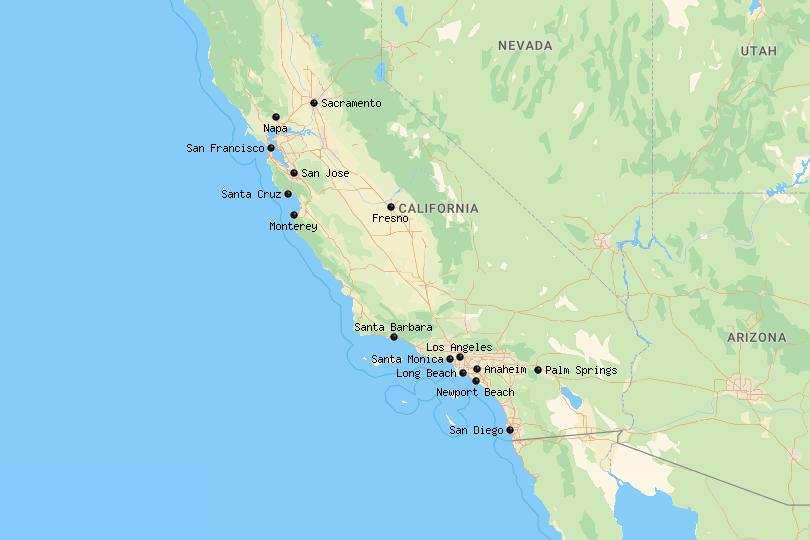Case Study: How USgeocoder helps Weller Legal Group Save Bankruptcy Debtors’ Homes by Locating the Correct Municipality and Parcel Size Data More Reliably and Efficiently
Bankruptcy lawyer, Jay Weller faced the challenge of obtaining accurate municipality and acreage information for debtors’ homestead properties in Florida.
With existing cumbersome search methods for these data points yielding partial or inconclusive findings, there had to be an easy and more reliable way of getting Municipality and Parcel data.
It was then that Mr. Weller discovered the easy-to-use Online Lookup Tool from USgeocoder.
Read the full story below…
ISSUE OF ACREAGE LIMITATIONS IN THE CLAIM OF THE FLORIDA HOMESTEAD EXEMPTIONS IN FEDERAL BANKRUPTCY PROCEEDINGS
 My name is Jay Weller, President of the Weller Legal Group PA. I am an attorney that represents Debtors in bankruptcy proceedings in the Middle District of Florida Bankruptcy Court, Tampa Division.
My name is Jay Weller, President of the Weller Legal Group PA. I am an attorney that represents Debtors in bankruptcy proceedings in the Middle District of Florida Bankruptcy Court, Tampa Division.
For any Debtor with a Homestead, who wants to retain their Homestead, file Bankruptcy, and successfully claim the Florida Homestead Exemption, it is important such Debtor be aware of the acreage limitations imposed by such Exemption.
In the State of Florida, its Homestead Exemption limits one Debtor to ½ acre of land if the Homestead is located within a municipality. If the land is located outside of the municipality, the Debtor may possess up to 160 acres of land. If the Debtor and his wife are both on the same Deed, and both filing bankruptcy, each may claim such Exemptions, in the collective total of one-acre within the municipality, and three hundred twenty (320) acres outside of the given municipality.
A bankruptcy attorney should also be aware of the common law concept of tenancy by the entireties, which also may be claimed as an Exemption, as such is found under Florida Law.
A mistake made in either the acreage amount and the location of the Homestead, whether inside or outside of the municipality, can have dramatic consequences for the Bankruptcy Debtor. For example, if a single filer claims a Homestead Exemption for one-acre Homestead located inside the municipality, the Debtor may be forced to either sell or partition part of the Homestead property, pay additional monies to account for the overage, or even sell the Homestead.
In a Chapter 13 Bankruptcy, the Debtor that exceeds these limitations would typically be required to pay the unsecured creditors an equivalent amount to which such creditors would receive if such asset or assets were liquidated in a Chapter 7 Bankruptcy. This is called the Liquidation Test.
It is important for the Bankruptcy Practitioner to conduct an investigation for each Client, who owns a Homestead, making certain of these three (3) elements:
- IS THE HOMESTEAD LOCATED INSIDE OR OUTSIDE OF THE MUNICIPALITY?
- HOW LARGE IS THE PARCEL SIZE OF THE HOMESTEAD?
- WHO IS ON THE DEED ON THE PROPERTY, OTHER THAN THE DEBTOR?
The process of investigating these issues can be rather consuming. One option for the Debtor would be to request an investigation by the local municipality as to whether the Homestead is within the municipality, or outside, in what would be considered the unincorporated zone or area. If one searches by searching the city name on google maps, one can view the lines of the municipality, but it is difficult to match the lines with the location of the Homestead. Both methods are cumbersome.
I further investigated a more efficient and accurate method to obtain the needed information. A Google Search revealed a few options, none of which were easily navigable. The search recommended by Google was a site called www.usgeocoder.com.
This site offered a free trial in which the user was instructed to enter the address of the property, along with the zip code, and then press enter to obtain results. The results yielded a map showing the location of the property, and its surroundings, along with a plethora of other information.
I couldn’t locate immediately the information I was seeking, namely; the size of the land that comprises the Homestead, and whether the Homestead was located within or without of the municipality. I called the phone number located on the website, and immediately, a man named Mitchell, demonstrated to me where the information is located.
The website is actually very easy to use. The information I need can be easily located. According to the man with whom I spoke, the information is regularly updated.
He did say that the municipality boundaries may change and there can be a window between when such changes are made, and when they are officially available for demonstration on the website. He further added that the Homeowner would receive numerous notices if his or her home was the subject of the redistricting of the lines of the municipality.
If there is a change in which the Homestead is later included in the municipality, this may not impair the Debtor, as the Florida Homestead Exemption provides a provision that if a Debtor, whose Homestead was located outside of a municipality, is later included in the municipality, unless the Debtor specifically consents to such inclusion, the Debtor may for exemption purposes, make the larger exemption available for Homesteads outside of the municipality, which is 160 acres per Debtor.
Mitchell informed me that the program is free to use and then in January of 2022, a monthly subscription offer of $25.00 will commence. Such fee in my opinion is extremely good value for what appears to be an excellent product.


 How To Correctly Calculate Washington State Sales Tax Rate
How To Correctly Calculate Washington State Sales Tax Rate